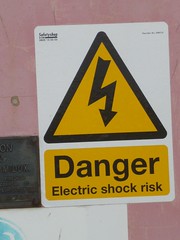The ICT Programme of Study is both short and non-specific as far as the technology it references is concerned. It’s easy, therefore, to fail to appreciate some of the subtleties in it. This is especially true of the Attainment Targets towards the end of the document, in which often the same phrases are used and it’s difficult to identify why one skill is deemed to be higher or lower than a similarly-worded one.
A case in point is the text relating to presentation at Levels 3 and 4:
Level 3
They use ICT to generate, develop, organise and present their work.
Level 4
They add to, amend and combine different forms of information
from a variety of sources.
For me, a crucial difference here is the word “combine”. At Level 3 you wouldn’t be expected to do more than, say, record a podcast or create a text-heavy or image-heavy presentation. But at Level 4 you would be expected to combine two or more types of information.
OK, so even if you create an image-heavy presentation, doesn’t that imply that there would be at least some text, if only captions? Yes, but I think the word “combine” suggests something more than that, perhaps edging towards “integrate”. For example, text and graphics integrated in terms of layout, with text flowing around the pictures, suggests that thought has gone into the total package, as it were. Ideally, the text and graphics will relate to each other quite closely as well. Perhaps a set of figures will be complemented by a pie chart, not simply in a gratuitous manner, but in a way that helps the audience get the point the text and the presenter are attempting to make.
Level 4 also uses the words “add to and amend”. That suggests to me that at Level 3 the student can “get away” with using the information as it comes, but not at Level 4. Perhaps at its simplest level it means something as straightforward as cropping a photograph to remove extraneous detail. For example, the first picture below, which I used to illustrate the article Technology and society, is a cropped version of the second picture – most of which was irrelevant to that article.

Conclusions
I think we can draw several conclusions from this analysis:
- There is more to the ICT Programme of Study than meets the eye.
- There is plenty of scope for interpretation…
- … Which makes it imperative for colleagues to have many in-depth discussions about what the Levels are demanding of students, and how to recognise when those demands are being met.
- There is scope to go beyond the usual fare of Office programs and still meet the requirements of the ICT Programme of Study. For example, a student could use Audacity to create a presentation combining text, graphics and sound. It’s also possible to be imaginative even within Office programs. For example, as well as combining data and charts in a spreadsheet, you can integrate text and graphics in a word-processed document.
- The corollary of this is that if you decide to follow a curriculum that is all-singing and all-dancing, full of video, Web 2.0 and 3D, Augmented Reality or whatever the newest techno-fad happens to be, that is great, but you will still need to go back to basics and make sure that the assignments you set allow the students to demonstrate the skills encapsulated in those Statements of Attainment.
- The boundaries between one level and the next are more fuzzy than sharp. For example, at Level 5 students must be able to “use ICT to structure, refine and present information in different forms and styles for specific purposes and audiences.” It seems to me that the difference between that and the Level 4 statement is more a matter of degree than a completely different set of skills. But there is no doubt that the Level 5 statement represents a higher level of skill because it suggests an ability to take both a more holistic view and to be able to repurpose the data and information for presentation to different audiences.

